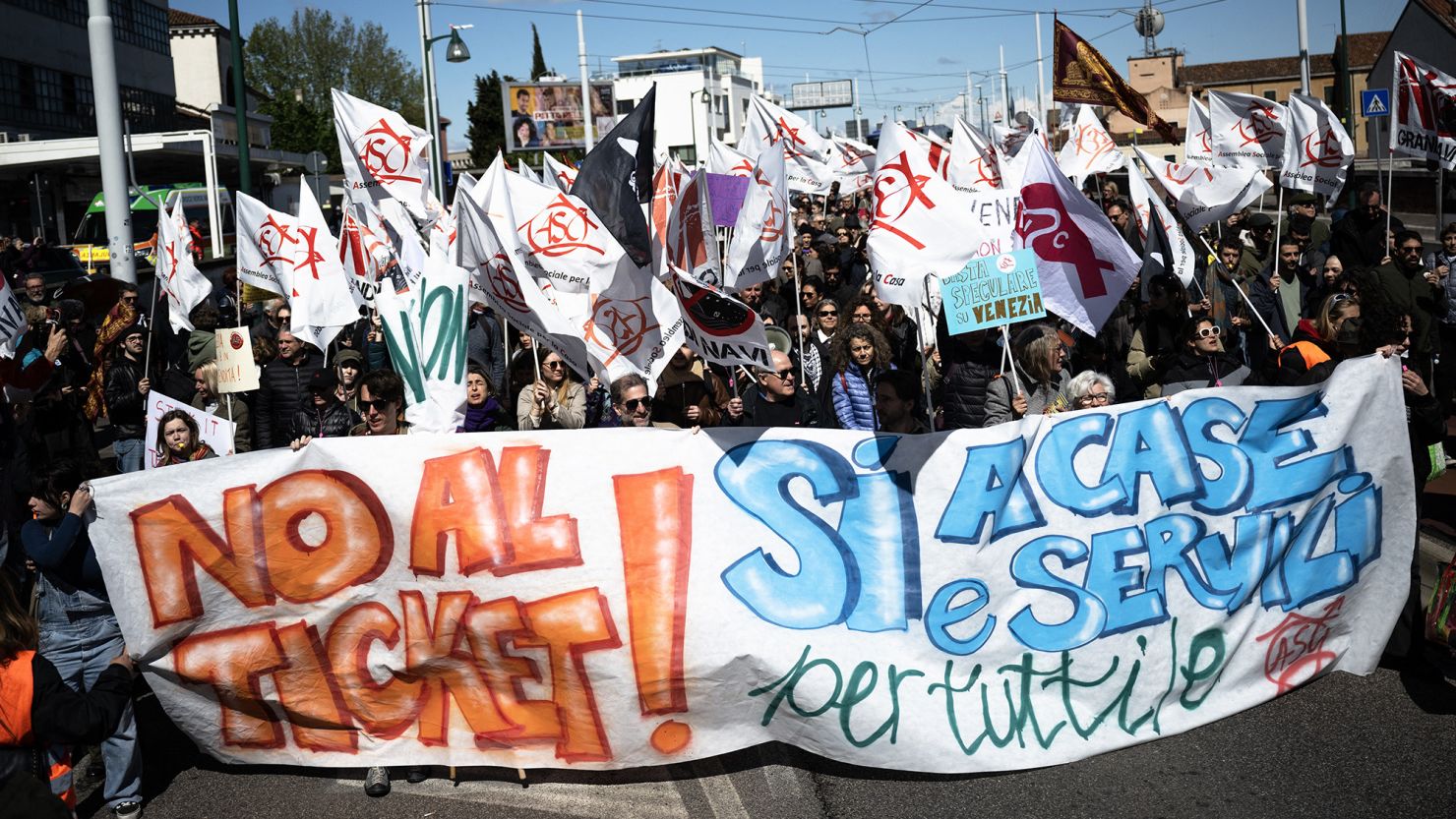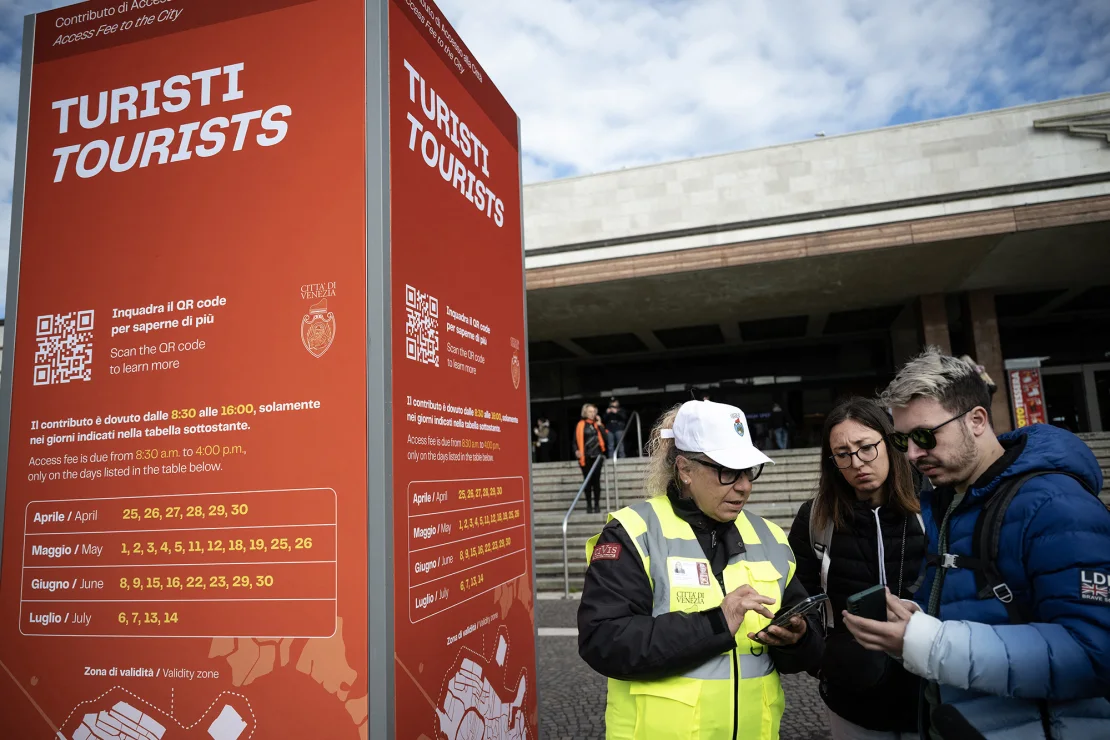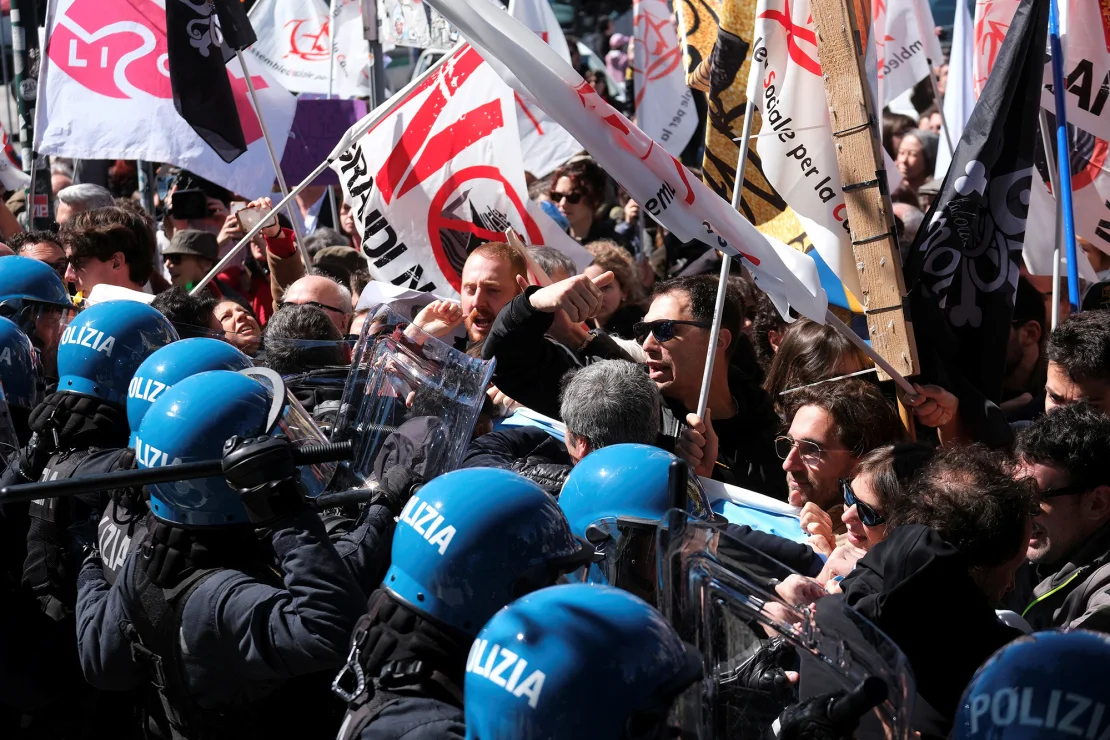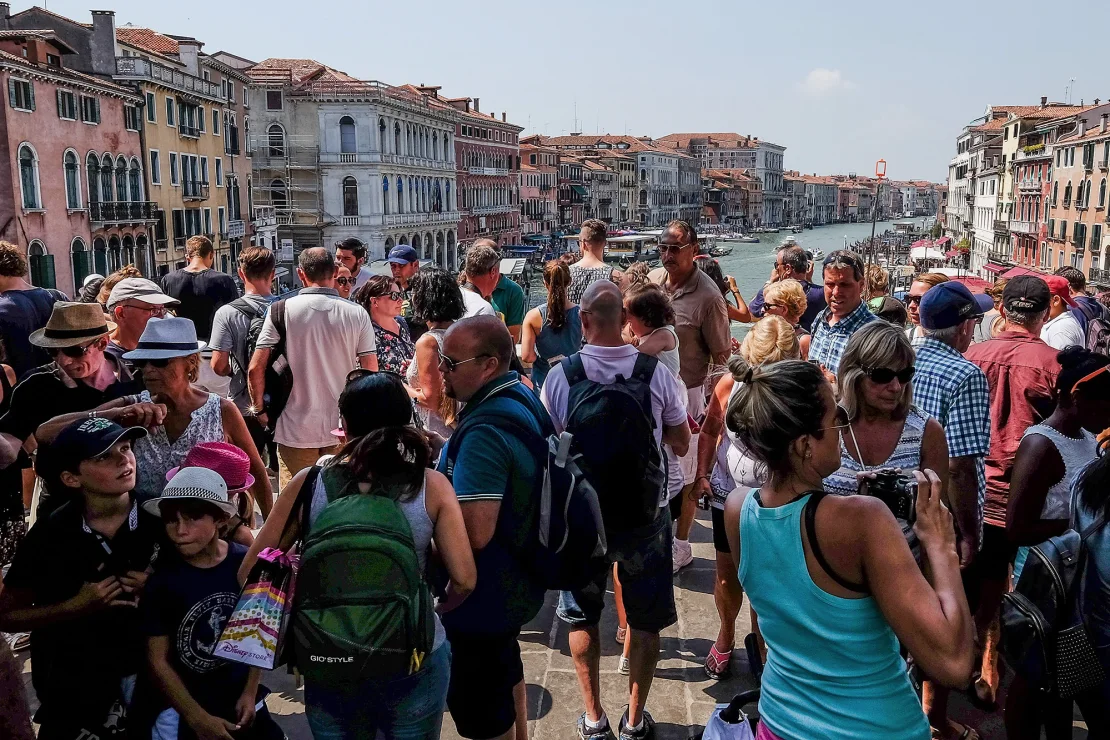Venice, known for its rich history and cultural significance, made headlines on April 25 as it implemented a groundbreaking measure—the world’s first entry fee for day-trippers.
What was traditionally celebrated as Italy’s Liberation Day and the feast day of St. Mark, the city’s patron saint, now carries additional weight as Venice grapples with managing its tourism influx.
The introduction of the contributo di accesso, labeled as an ‘access contribution,’ stirred controversy and sparked protests among locals.
Demonstrators voiced their opposition to the city’s transformation into what they perceive as a theme park or museum, denouncing the imposition of barriers reminiscent of amusement parks.
Balancing Tradition and Tourism: Venice’s Struggle with Over tourism and Entry Fees

Under the new system, day-trippers, excluding Veneto residents, are required to pay a five-euro fee if they arrive between 8 a.m. and 4 p.m.
Visitors staying overnight are exempted, as they already incur an overnight tax. However, they must register for an exemption, emphasizing the administrative hurdles associated with the fee.
Protests erupted at various entry points, with clashes reported between demonstrators and authorities.
Ruggero Tallon, a prominent organizer, criticized the fee as a medieval tax that fails to address the underlying issues of mass tourism. Concerns were raised regarding data privacy as the fee collection is managed by a private company.

Elena Gastaldello, president of Arci of Veneto, echoed these sentiments, emphasizing the fee’s ineffectiveness in controlling tourist numbers without accompanying urban development policies.
The registration scheme underscored Venice’s housing challenges, with second homeowners comprising a significant portion of registrants.

As the first day of implementation unfolded, authorities reported a significant number of registrations, shedding light on the magnitude of Venice’s tourism pressure.
Despite protests, some visitors expressed support for the fee, citing its potential contribution to infrastructure maintenance and local economy stimulation.

However, skepticism loomed among locals, with concerns over the fee’s efficacy in curbing overtourism. Paolo Brandolisio, a local artisan, criticized the absence of visitor limits, foreseeing potential chaos with unchecked tourist inflows.
Others, like Achille Giacom, voiced apprehension over data privacy implications, viewing the fee as a form of population control.
Venice’s historic step towards regulating tourism reflects the city’s ongoing struggle to balance preservation with economic sustainability.






Leave a Reply